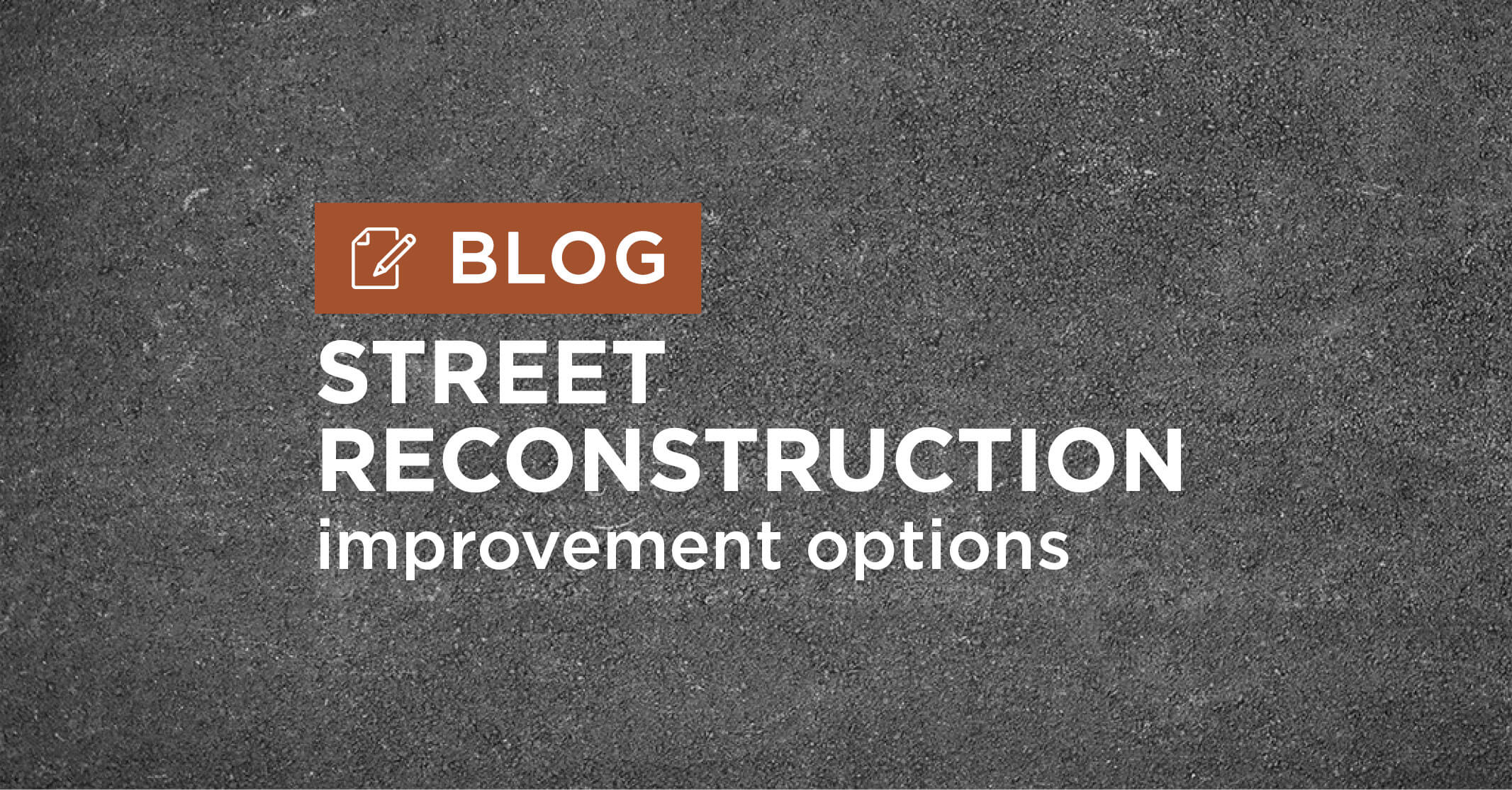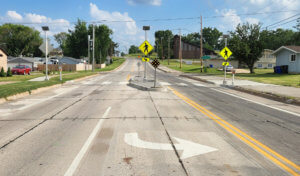Meeting Infrastructure Needs and Accommodating All Modes of Transportation
Maintaining a safe and reliable transportation system is essential for any city or town, and the quality of a community’s streets and infrastructure has a significant impact on its livability, economic vitality, and overall quality of life. However, over time, aging infrastructure can deteriorate, and roadways can become damaged, leading to a decline in driving conditions, accessibility, and safety.
When it comes to improving roadways, there are several reconstruction methods and improvement options to consider, each with its advantages and disadvantages. The comprehensive design services offered by the Snyder & Associates team ensure we can cover any option your specific situation requires. Here, we’ll explore several roadway reconstruction methods and improvement options guided by criteria such as the need to replace underground infrastructure, pavement rehabilitation options, adding multimodal accommodations, and adding or reducing lanes.
Road Reconstruction when Underground Infrastructure Needs Replacing
When underground infrastructure such as water, sanitary, or storm sewer lines require repair or replacement, street reconstruction is often necessary. This process typically involves removing the existing pavement, excavating the roadway to access the underground infrastructure, making the necessary repairs or upgrades, and then rebuilding the roadway from the ground up. This approach ensures that the infrastructure below the surface is functioning properly and safely while also providing a new, smooth, and durable roadway for drivers. Our team’s ability to “package” projects together can often save substantial amounts of money for our clients.
Pavement Rehabilitation & Reconstruction Options
 Sometimes the underground infrastructure is in good condition, and the focus of the road improvement is on the pavement itself. Two popular pavement reconstruction and rehabilitation options are crack and seat and full-depth reclamation (FDR).
Sometimes the underground infrastructure is in good condition, and the focus of the road improvement is on the pavement itself. Two popular pavement reconstruction and rehabilitation options are crack and seat and full-depth reclamation (FDR).
Crack and seat is a process where the existing concrete pavement is fractured into small pieces using specialized equipment. The fractured pieces are then compacted to create a stable base for a new layer of pavement. This technique is best suited for pavements with moderate to severe cracking or unevenness and the base material is in good condition. The crack and seat method also eliminates the need (and expense) of hauling and disposing of broken chunks of the old roadway.
Full-Depth Reclamation (FDR) is a more comprehensive approach that involves pulverizing the existing asphalt or concrete pavement with a special milling machine and blending it with the underlying layers of soil and aggregate. Emoluments are then added for stabilization, creating a new base layer that is then covered with a new layer of asphalt. FDR is best suited for pavements with deep structural issues, including rutting and base failures.
Working with Existing Infrastructure to Add Multi-Modal Accommodations
As communities seek to become more accessible, equitable, and sustainable, they’re consistently placing a greater emphasis on multimodal transportation options such as walking, biking, and public transit. One way to improve the safety and accessibility of roadways is to add multimodal accommodations. This may include adding bike lanes, sidewalks, or dedicated transit lanes.
Bike lanes provide a designated space for cyclists to ride, separating them from vehicular traffic and increasing safety. These lanes can be added to existing roadways by repurposing a portion of the roadway or by widening the road.
Sidewalks provide safe, accessible walkways for pedestrians, increasing connectivity and promoting active transportation. In areas where sidewalks are lacking, they can be added through new construction or by widening the roadway.
Dedicated transit lanes and floating bus islands provide a designated space for buses or other public transit vehicles, allowing them to bypass traffic and improving travel times for transit users. These lanes can be added by repurposing an existing lane or by widening the roadway.
Our team of experts has been instrumental in implementing all types of multi-modal accommodations for numerous clients and communities. These projects include the Alburnett Road Corridor Extension in the City of Marion, Pleasant Hill Streetscape Upgrades, and the 6th Avenue Streetscape project for the City of Des Moines. All these projects incorporate one or more multi-modal features.
Adding or Reducing (Road Diet) Roadway Lanes
Adding or reducing lanes is another option for improving the functionality and safety of streets. Adding lanes can increase capacity and improve traffic flow while reducing lanes, also known as a “road diet,” can improve safety by reducing speeds and the number of conflict points.
When considering adding or reducing lanes, it’s imperative to conduct a thorough traffic analysis to determine the impact on traffic flow and safety. It’s also important to consider the needs of all users of the street, including pedestrians and cyclists. While adding lanes may often require the installation of a new pavement area, a road diet is typically completed within the bounds of the existing roadway. Dual-use center turn lanes may be added, as well as dedicated bike lanes to meet the multi-modal needs of the area.
Our team’s recent work along 5th Avenue S in Fort Dodge highlights the benefits of adding turn lanes to a busy commercial thoroughfare. Further to the south, in Knoxville, we completed a road diet project along Lincoln Street/Iowa Highway 14 that maximized the city’s investment and created a safer, more efficient corridor.
Customized Comprehensive Street & Roadway Solutions
Developing safe and reliable roadways is crucial for any community’s success. Aging infrastructure and damaged roadways can negatively impact driving conditions, accessibility, and safety, ultimately affecting a community’s quality of life and economic vitality. Fortunately, there are various roadway reconstruction methods and improvement options available, each with its benefits. The Snyder & Associates team offers comprehensive design services to help communities navigate these options and find the best solutions for their specific needs. By investing in the improvement of their transportation system, cities and towns can create a more livable and thriving environment for their residents and businesses.

